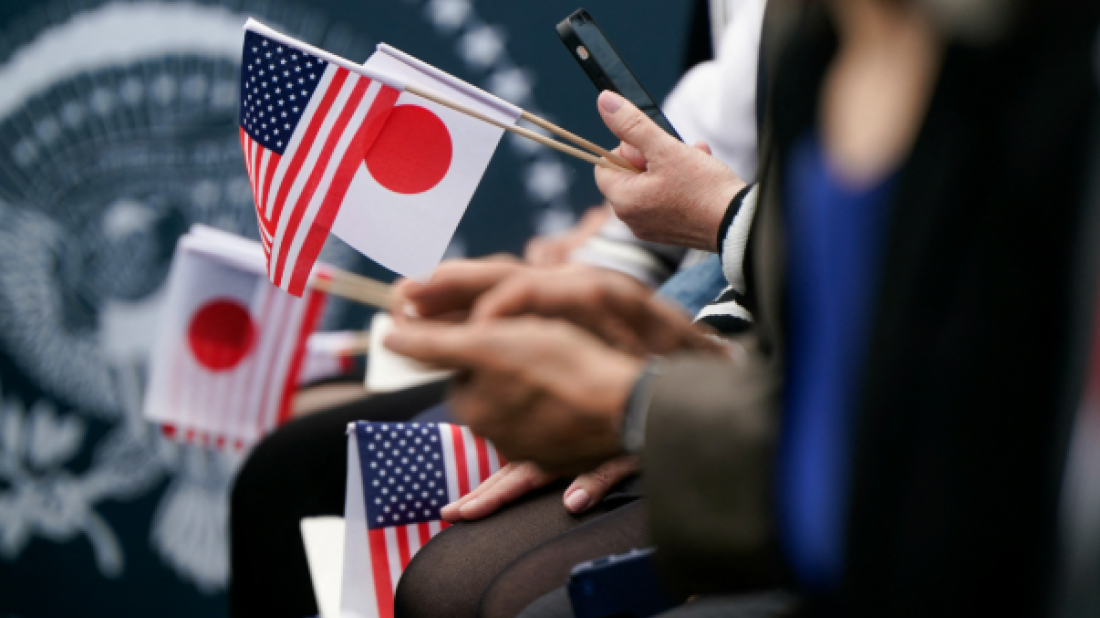Tehran sees massive protests as unrest spreads nationwide
Tens of thousands of Iranians have taken to the streets in Tehran and across at least 28 cities in a wave of anti-government demonstrations, now enter...

The United States and Japan reached a major trade deal to cut auto tariffs to 15% and unlock $550 billion in Japanese investment, averting new levies ahead of the 1 August deadline set by President Donald Trump
The US and Japan have finalised a sweeping trade agreement that slashes tariffs and commits Tokyo to $550 billion in US-bound investment and loans, offering significant relief to Japan’s auto industry ahead of looming tariff hikes.
President Donald Trump hailed it as “the largest TRADE DEAL in history with Japan,” writing on Truth Social that it reflects the strong relationship between the two allies.
The agreement reduces existing 25% auto tariffs to 15% and cancels a new round of levies on Japanese goods that were due to take effect on 1 August.
Autos represent more than 25% of Japan’s exports to the U.S. and the announcement sparked a surge in Japanese markets, with the Nikkei index rising 2.6% and carmaker stocks gaining sharply. Toyota shares jumped more than 11%, while Honda and Nissan rose more than 8%.
In addition to tariff reductions, the agreement includes a pledge by Japanese government-affiliated institutions to channel up to $550 billion into U.S. supply chains, particularly in sectors such as pharmaceuticals and semiconductors.
Prime Minister Shigeru Ishiba, facing pressure after losing his upper house majority, described the new tariff rate as “the lowest figure among countries that have a trade surplus with the U.S.”
Japan also agreed to increase purchases of American agricultural products, such as rice, though Ishiba insisted the deal would “not sacrifice Japanese agriculture.”
However, U.S. automakers voiced concern. The American Automotive Policy Council criticised the deal for favouring Japanese imports with low US content over North American-built vehicles, which still face 25% tariffs.
"Mission Complete," Japan’s lead negotiator Ryosei Akazawa posted on X after meeting Trump at the White House, confirming the deal does not cover steel or aluminium tariffs, nor defence spending commitments.
Two-way trade between the U.S. and Japan reached nearly $230 billion in 2024, with Japan running a $70 billion surplus. Japan remains the largest foreign investor in the U.S. with around $2 trillion in assets and $1.2 trillion in direct investment by the end of last year, according to the Bank of Japan.
Speaking at the White House, Trump said Japan was also ready to join a joint venture to support an Alaskan LNG pipeline, a project long backed by his administration.
With the 1 August deadline approaching, the Trump administration is racing to conclude deals. Framework agreements with the UK, Vietnam, and Indonesia are already in place, while negotiations with the European Union are due to continue in Washington this week.
Open-source intelligence (OSINT) sources reported a significant movement of U.S. military aircraft towards the Middle East in recent hours. Dozens of U.S. Air Force aerial refuelling tankers and heavy transport aircraft were observed heading eastwards, presumably to staging points in the region.
Snow and ice stalled travellers in northwest Europe on Wednesday, forcing around a thousand to spend the night in Amsterdam's Schiphol airport but delighting others who set out to explore a snow-blanketed Paris on sledges and skis.
Diplomatic tensions between Tokyo and Beijing escalated as Japan slams China's export ban on dual-use goods. Markets have wobbled as fears grow over a potential rare earth embargo affecting global supply chains.
Two people have been killed after a private helicopter crashed at a recreation centre in Russia’s Perm region, Russian authorities and local media have said.
U.S. President Donald Trump has warned that Iran could face a strong response from the United States if its authorities kill protesters amid ongoing unrest.
Türkiye’s UN envoy called on the international community on Thursday to maintain strong support for the elimination of Syria’s remaining chemical weapons, stressing that the task is both a legal obligation and a critical priority for regional security and humanitarian protection.
Georgia has said it will clarify the circumstances surrounding the U.S. seizure of a Russian‑flagged oil tanker in the North Atlantic and is seeking information on its Georgian crew members.
In a bold move to prioritise American interests, President Donald J. Trump has signed a Presidential Memorandum directing the withdrawal of the United States from 66 international organisations, including both non-United Nations entities and several UN-related bodies.
The U.S. Department of Homeland Security has said it may deploy additional federal agents to Minnesota following the fatal shooting of a woman by an Immigration and Customs Enforcement (ICE) officer.
UN Secretary-General Antonio Guterres expressed regret on Thursday over the decision by the Trump administration to withdraw from 31 entities linked to the United Nations.
You can download the AnewZ application from Play Store and the App Store.

What is your opinion on this topic?
Leave the first comment